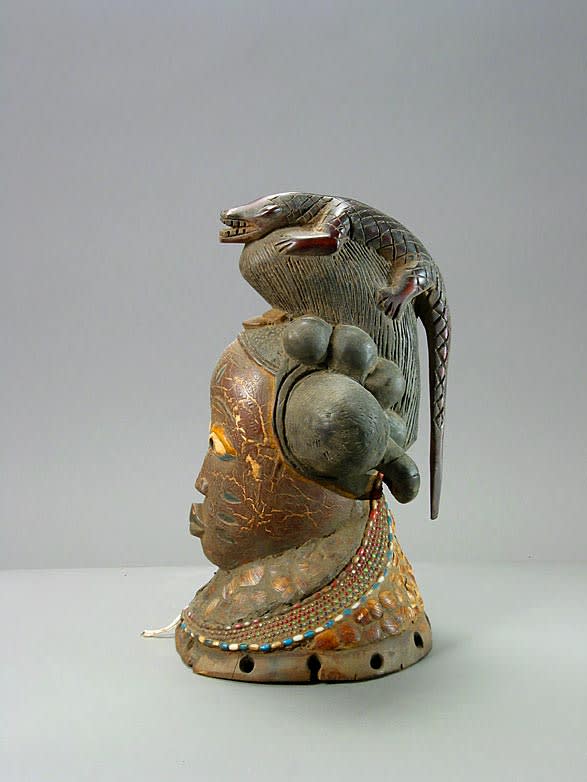Yoruba Wooden Headdress Mask, 20th Century CE
Wood
14
PF.5915
Further images
Originally, this mask would have been worn atop the head like a crown. Either a cloth or raffia veil would have covered the face of the wearer and disguised his...
Originally, this mask would have been worn atop the head like a crown. Either a cloth or raffia veil would have covered the face of the wearer and disguised his identity. This mask is a representation of a beautiful female. The decorative scars along her forehead and cheeks are representative of her stunning beauty and also identify her as a member of the Yoruba tribe. Her hair has been elegantly gathered into three large nodules in addition to several small knobs and a braided tail in the back that connects the two side knobs. This fantastic coiffure further emphasized this woman’s extraordinary beauty. There is a mysterious quality that pervades this work as revealed by the alligator that has crawled upon the top of the central knob. What is the relation between this animal and the woman? Perhaps it is symbolic of the woman’s strength and power. The most splendid feature of this mask, besides the woman’s piercing gaze, is the sumptuous adornments. Actual beaded necklaces have been attached to her neck, not carved replicas, as is generally the case. In addition, fragments of shells have been imbedded into her collar, further embellishing her beauty and elegance. Shells were of particular value to tribal Africans and in some tribes functioned as a form of currency. Overall, this mask can be characterized by a love of adornments that beautify both the mask itself and the idealized woman it honors.







